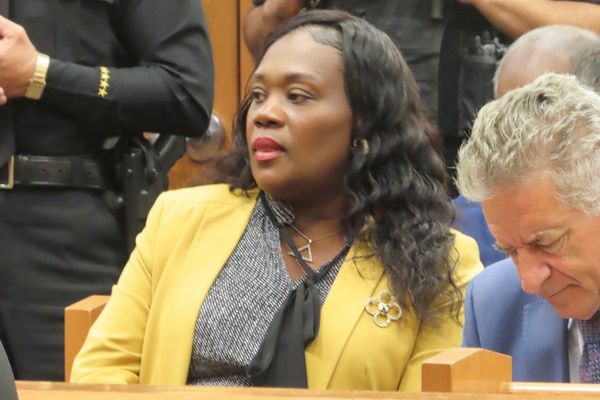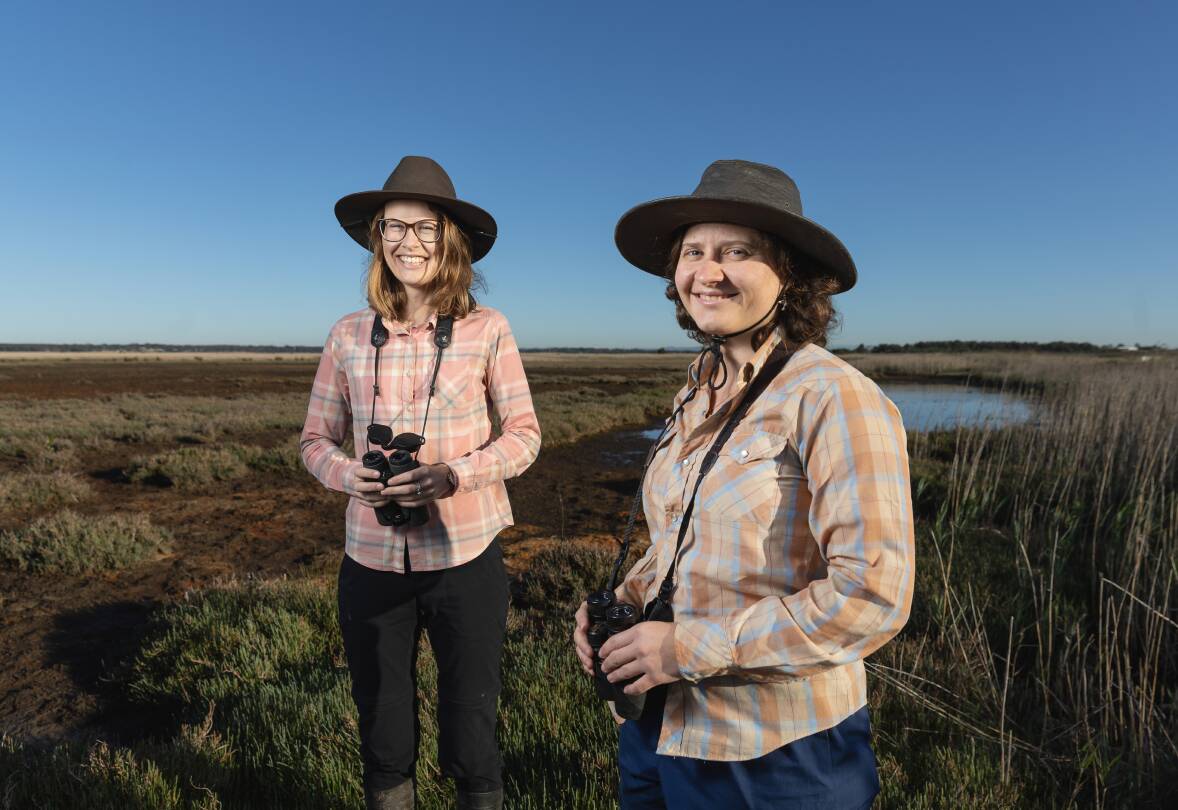
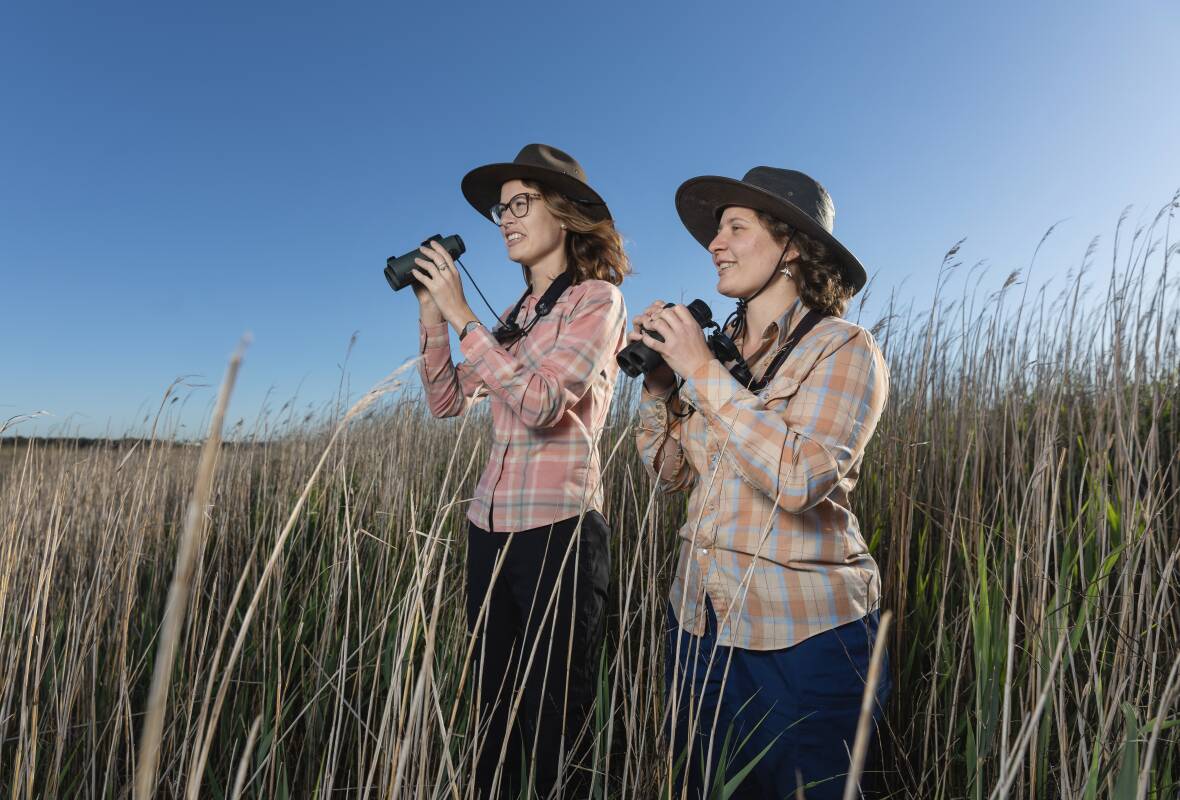
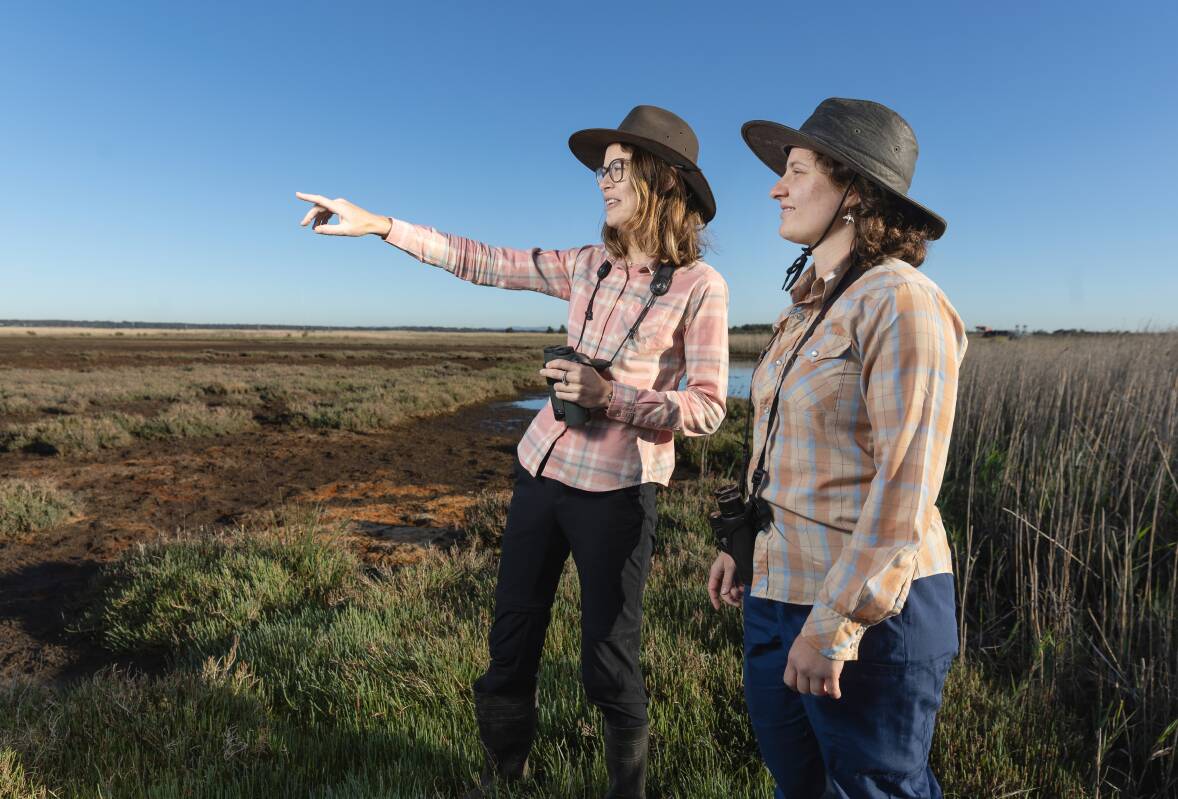
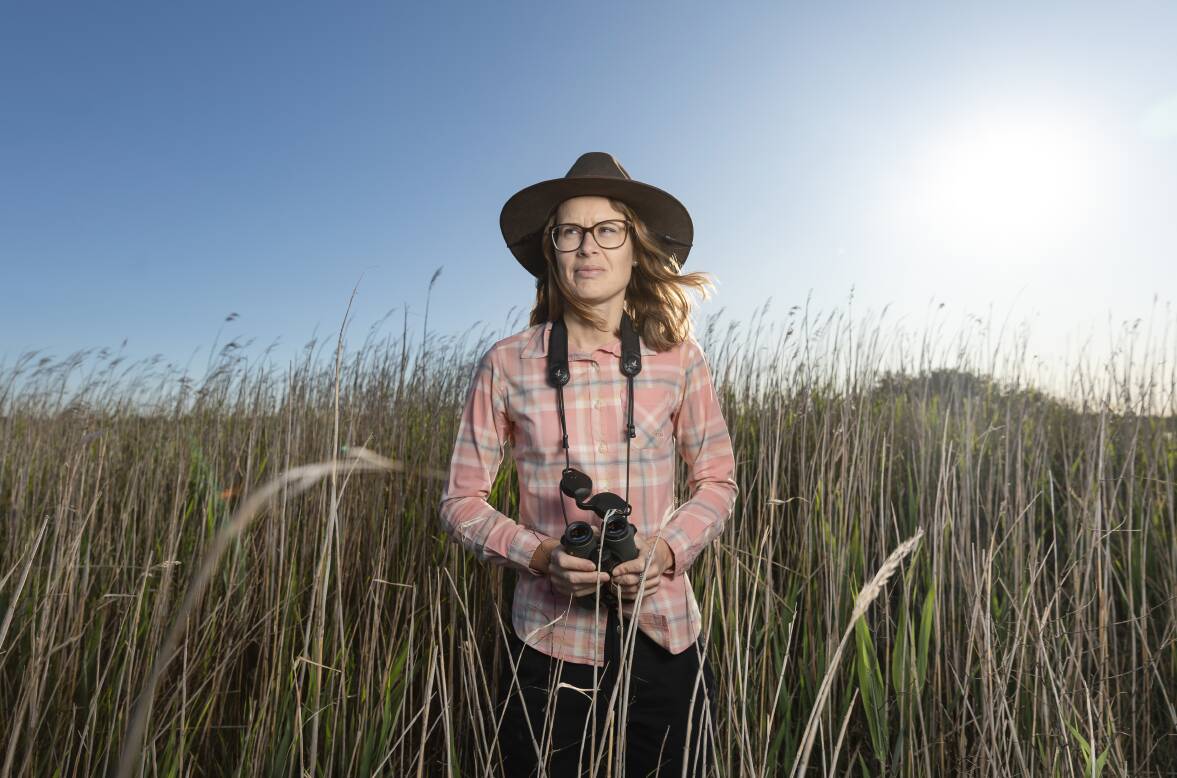
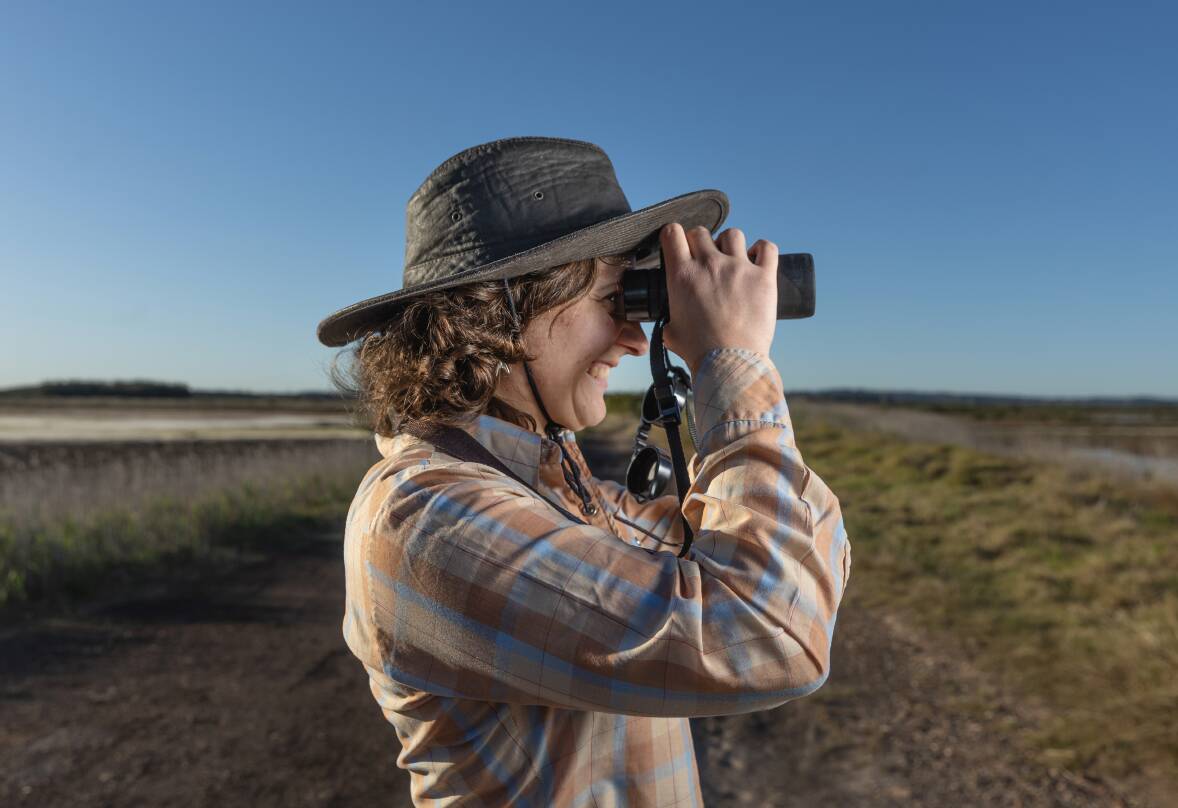
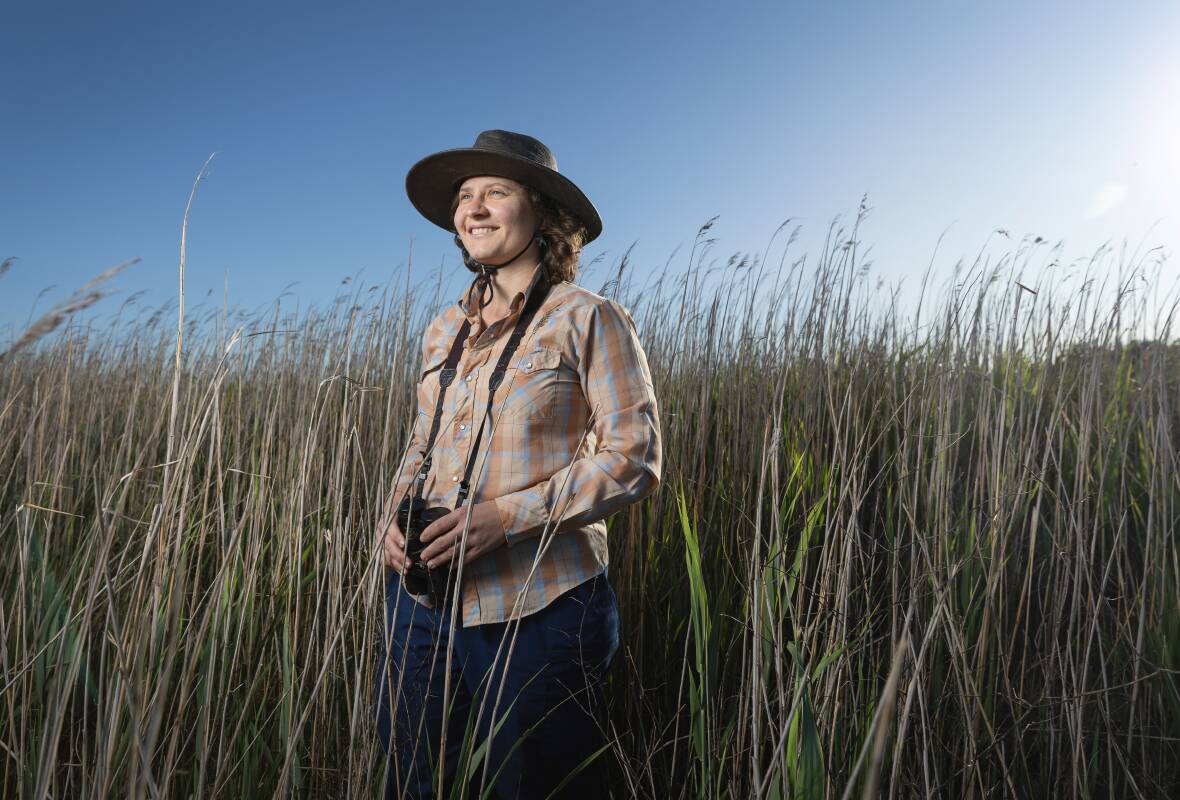
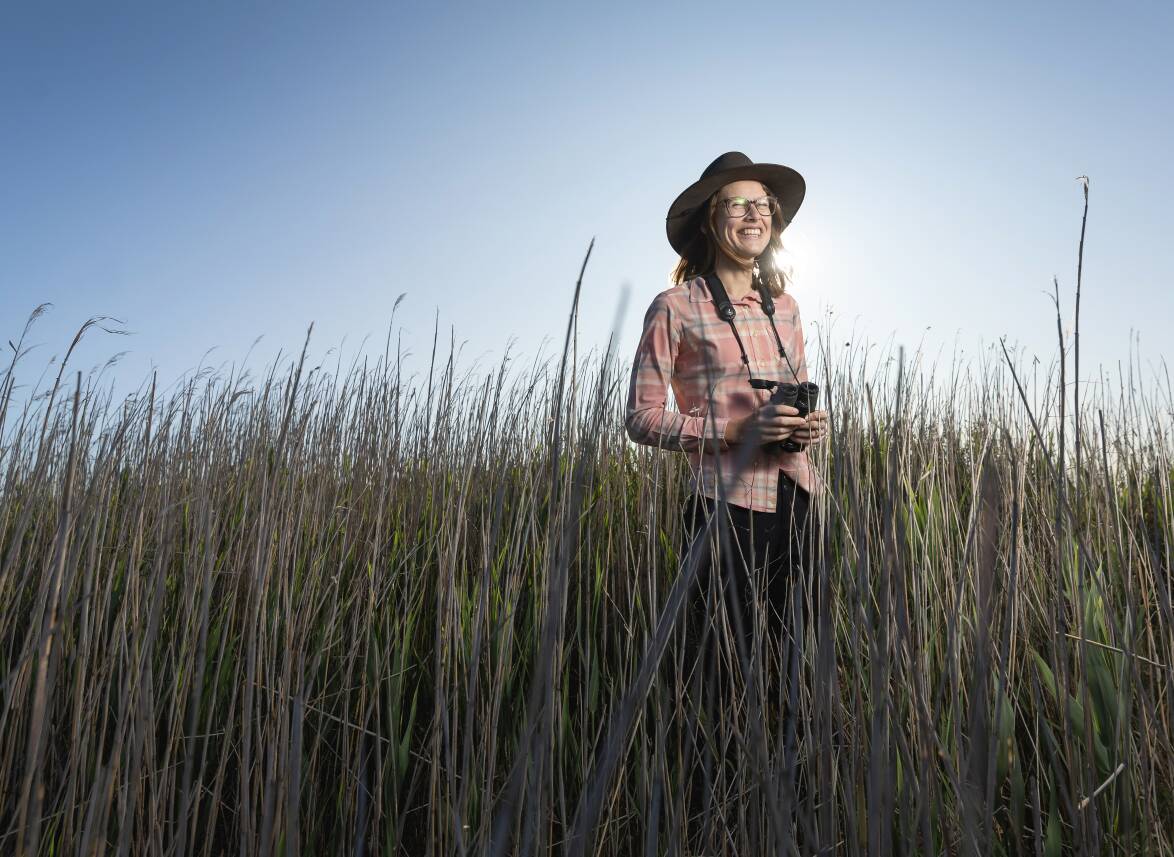
The birdlife may be abundant but the humans are scarce when Louise Williams conducts research in the Hunter wetlands around Hexham.
"In some spots within the Hunter Wetlands National Park, you feel like you are a million miles away from the city," said Ms Williams, a University of Newcastle researcher.
"As a birdy person, I've always been in awe at the immense diversity of birdlife found at many of our local wetland areas," she said.
"It's not just the waterbirds and shorebirds that call these areas home. You can find all kinds of birds, everything from finches to raptors."
She said the wetlands were a calming place.
"It's nice to be surrounded by nature and an abundance of birdlife."
Her main goal for exploring the wetlands, though, isn't serenity.
She is investigating "the drastic population declines seen in migratory shorebird populations in the Hunter Region".
This decline has occurred over the past few decades due to destruction of habitat, hunting and disturbance.
"My research addresses a few pieces of the puzzle," Ms Williams said.
She aims to pinpoint areas that should be prioritised for shorebird conservation.
Her research - funded by Hunter Local Land Services - reflects a desire to protect a jewel of the region's natural environment.
She explores wetland areas in the Hunter Estuary, such as Hexham Swamp, Ash Island, Tomago, Stockton Sandspit and Fullerton Cove.
Part of her mission is to determine what foods the birds are eating.
"I follow around shorebirds that are eating at low tide, waiting for them to poop.
"I then scurry over and scoop up the poop, take it back to the lab, and look at the DNA.
"It can tell me what invertebrates the birds are eating."
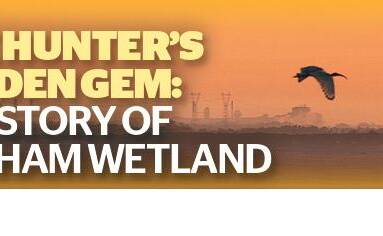
She also studies what plants support the shorebird food chain.
For this, she collects leaf samples from wetland plants and takes "a drop of blood from the birds that we catch".
"We catch the birds using mist nets, either late at night or in the very early hours of the morning.
"Sometimes we're out on the wetland/mudflat at 2.30am."
The work must be done in the darker hours, so the birds don't see the nets.
"We are collectively studying the movements of the shorebirds by catching them and fitting them with radio transmitters and coloured leg flags," she said.
An important part of her work is investigating whether "introduced red foxes are a predatory risk to the birds at their high tide roosts".
"I examined the DNA present in the scats to see what types of birds the foxes are eating.
"Thankfully there wasn't any shorebird DNA detected, but there were plenty of waterbirds, pigeons and even a chicken."
Ms Williams is researching a variety of shorebirds, but mostly the migratory types.
"They are the ones most under threat and suffering the most severe population declines in the Hunter," she said.
The species she studies migrate annually between the northern to southern hemispheres.
They breed in the north, as far as Siberian Russia and Alaska.
They return to the south - places like the Hunter during summer - to spend the non-breeding season.
"The size of these birds varies greatly from the tiny red-necked stint to the world's largest shorebird, the far eastern curlew."
She said their "incredible migration journeys" were impressive.
"It was extremely exciting in April this year when one of our bar-tailed godwits that we colour-flagged in the Hunter was spotted on a mudflat in southern Japan.
"This species is the current record-holder for the greatest single non-stop migratory flight."
One of these birds was recorded flying 13,500 kilometres from Alaska to Tasmania last year.
"While our bird may not have flown quite that far, its effort is still very impressive to me."
Ms Williams said she had "always had an immense appreciation for wetlands and the vital roles they play for many groups of organisms".
This began when she volunteered at the Hunter Wetlands Centre while in high school.
Her colleague Mattea Taylor - also a University of Newcastle student - has a different research project in the wetlands.
"My focus is the threats shorebirds face from industry disturbance and metal pollution," Ms Taylor said.
She's collecting data on pollution from old copper smelters, agriculture and the coal industry.
"Different birds could be exposed to different metals, depending on where they are foraging," she said.
Ms Taylor said wetlands play an important role for the environment and people.
"They are a buffer for storms and toxins. Wetlands tend to be a good sink, preventing toxins from getting further into the environment," she said.
Hunter Local Land Services is doing a lot of work restoring the wetlands.
"Historically in the last 100 to 200 years, people have made changes that made the Hexham wetlands more freshwater than estuarine," Ms Taylor said.
"They changed the habitat."
Since the Ironbark Creek floodgates were opened from 2008 to 2013, the habitat is changing again.
"Hopefully that's for the better. It's a complicated but important site for some species of shorebirds and waterbirds," she said.
Her research "strongly builds on the knowledge base of the Hunter Bird Observers Club".


